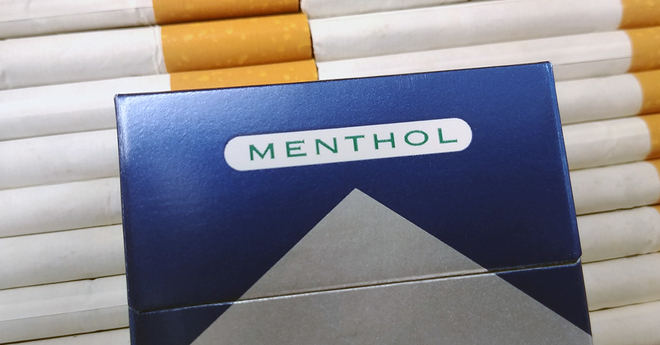Menthol tobacco product use higher among youth, women and African Americans
Menthol is a chemical compound extracted from the peppermint and corn mint plant or created synthetically. It reduces the harshness of cigarette smoke due to its characteristic cooling effects on the mouth and throat. Although most cigarettes contain small amounts of menthol, certain brands use menthol in greater quantities as a characterizing flavor, and market and advertise those brands as “menthol.”
56.7%
56.7% of youth smokers smoked menthol cigarettes from 2008 to 2010
Menthol was first added to cigarettes in the 1920s and 1930s, and it became widespread in the 1950s and 1960s. The 2009 Family Smoking Prevention and Tobacco Control Act’s ban on the use of characterizing flavors in cigarettes did not include menthol, although the U.S. Food and Drug Administration (FDA) does have the authority to implement a ban through regulations. There are currently no restrictions on characterizing flavors, including menthol, in other tobacco products, such as little cigars, cigarillos and smokeless tobacco
The 2009 Family Smoking Prevention and Tobacco Control Act’s ban on the use of characterizing flavors in cigarettes did not include menthol.
Menthol was first added to cigarettes in the 1920s and 1930s, and it became widespread in the 1950s and 1960s.
Key takeaways
Menthol cigarettes made up 32 percent of the cigarette market in the U.S. in 2011.
In 2010, there were an estimated 20 million menthol cigarette smokers in the U.S.
56.7 percent of youth smokers smoked menthol cigarettes from 2008 to 2010.
Women are 1.6 times more likely than men to smoke menthols
Almost one in five (19.1 percent) African-Americans smoke menthol cigarettes.
49.4 percent of middle school current smokers reported smoking menthol cigarettes, according to data combined for years 2004, 2006, and 2009 of the National Youth Tobacco Survey.
More in traditional tobacco products
Want support quitting? Join EX Program
By clicking JOIN, you agree to the Terms, Text Message Terms and Privacy Policy.
Msg&Data rates may apply; msgs are automated.



